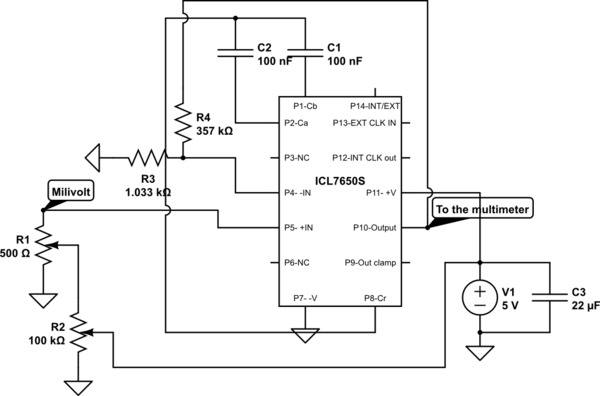I suggest that your multimeter is not as good as you think. Then again, the circuit is not as you think either.
When measuring gains, you've fallen prey to the error of not accounting for offsets. Your 4 individual measurements are OK (well, not really, but keep reading) but your conclusions are wrong. Instead of computing gain from individual input/output combinations, compare separate readings. So, for instance, between the first and last readings, the input changes by (9.6 - 2.1) mV, or 7.5 mV. For the same measurements, the output changes by (3.09 - .578) volts, or 2.512 volts. So the gain is 2.512 / .0075, or 324. Your nominal gain is 1 + (357/1.033), or 346.6.
Is this a problem? Probably not. If you have the manual for your multimeter, take a look at the accuracy section, and pay attention. The first thing you'll see is, for voltage measurements, a number such as 0.1% +/- 1 digit. Since your input measurements were all taken at the same range, you can assume the scale factor remains constant, but the 1-digit uncertainty remains. This means that 9.6 mV could be 9.5 or 9.7, and the 2.1 could be 2.0 or 2.1. As a result, your input difference could be anywhere in the range of 7.3 to 7.7 mV.
The output readings are worse. The change in resolution (from x.xx to .xxx) suggests that the meter has internally changed ranges. In doing so, the scale factors have changed. The two readings will have an accuracy which is different between them. This is (or should be) part of the manual. Let's assume that the scale factors are good to 0.1%. Additionally, the fixed 3 digits means that the 3.09 volt measurement could vary by 10 mV, and you'd never know it. And the 1-digit uncertainty remains. So take it in order. 3.09 could be 3.08 to 3.10. In turn, this could be a range of 3.075 to 3.105 when you fill in the missing digit. Finally, multiplying by the scale factor of 1 +/- .001 gives a range of 3.072 to 3.109.
Combining the two, the actual gain could be anywhere in the range of (3.075 - .577)/ .0077) to (3.109 - .576) / .0073), or 324 to 345.
Aha! you cry. 345 is still too low! Yup. Now we come to your resistance measurements. You're using a 3 1/2 digit meter, and as with the voltage measurements, it's working on different scales for the two values. In each case, the measurement references an internal resistor, and the resistors are not perfectly accurate. In your case, let's be charitable and assume 0.5% accuracy. Then your 1.033 k could be in the range of 1.028 k to 1.038 k, while the 357 k could be in the range of 355.2 k to 358.8 k. Plugging these in gives a predicted gain in the range of 343 to 350.
Your measured gain range (324 to 346.6) overlaps your predicted range (343 to 350). There is no reason to think that your circuit is behaving other than expected. Actually, I've used what I consider quite conservative assumptions about voltage and resistance accuracy, particularly the resistance accuracy. For a cheap DMM, I would not be surprised if the numbers are worse, and the ranges shown above are larger.


